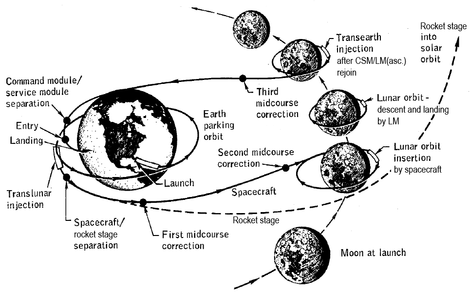The accepted answer describes the general Apollo mission plan, but as the question references Apollo 11 specifically, we can check the mission timeline to see all the maneuvers done during the mission.
In later mission timelines the engine used for midcourse correction is consistently called out, but for Apollo 11 I had to check the transcripts to verify.
There was one SPS midcourse correction burn on the outbound leg of the trip. Four optional corrections were scheduled in the flight plan, but three were canceled as unnecessary. (Only one or two are ever needed, but by scheduling four they gain a lot of flexibility.) The sole midcourse correction on the return leg was done on RCS according to the transcripts.
- 0:00 S-IC ascent
- 0:02 S-II ascent
- 0:09 1st S-IVB Earth orbit insertion/circularization
- 2:44 2nd S-IVB trans-lunar injection
- 26:44 SPS midcourse correction
- 75:49 SPS lunar orbit insertion
- 80:11 SPS lunar orbit circularization
- 101:36 LM DPS descent orbit insertion
- 102:33 LM DPS descent
- 124:22 LM APS ascent
- 135:23 SPS trans-Earth injection
So that's 11 total burns if you count each stage of the ascent separately.
There is one more burn that's not strictly necessary to complete the mission; the S-IVB stage used its auxiliary propulsion system to fine-tune its trajectory for a lunar slingshot maneuver, or, on some later missions, to crash into the moon.
